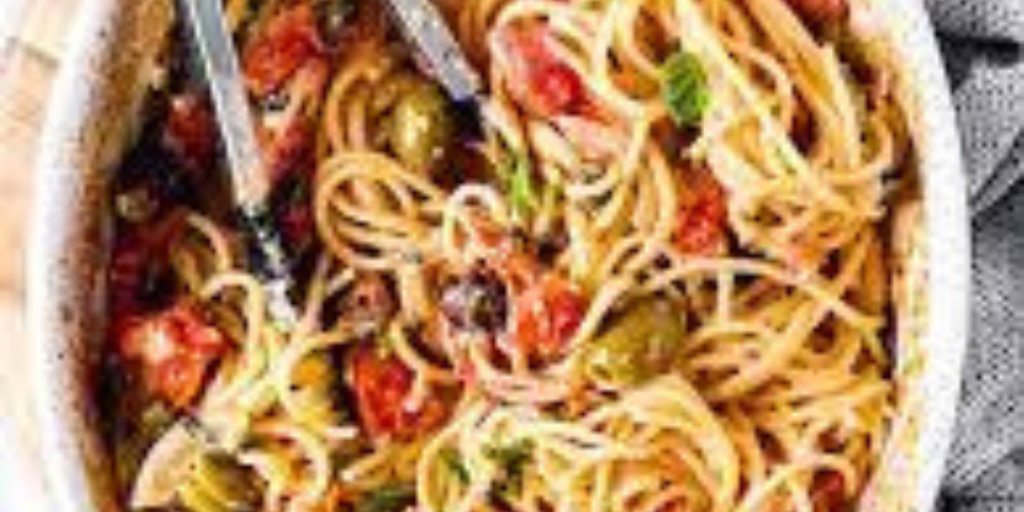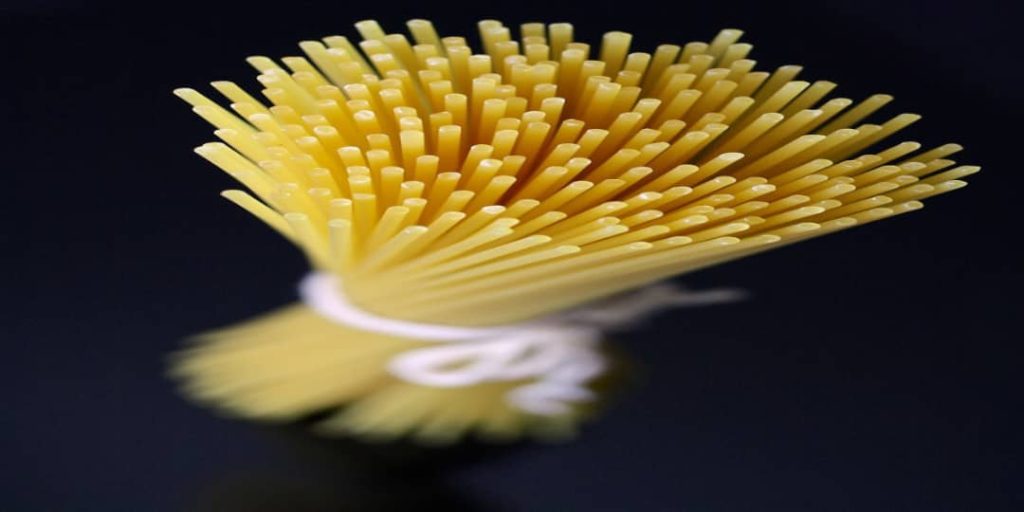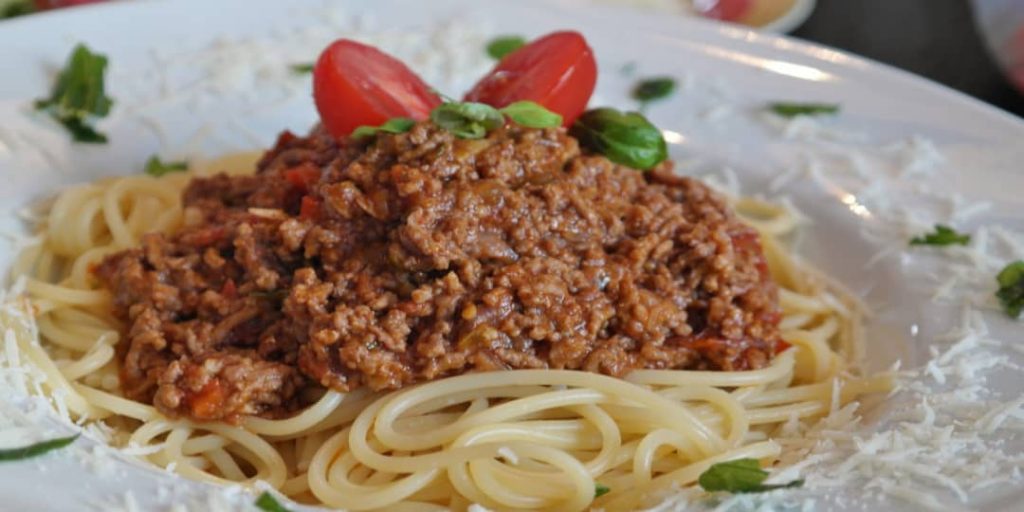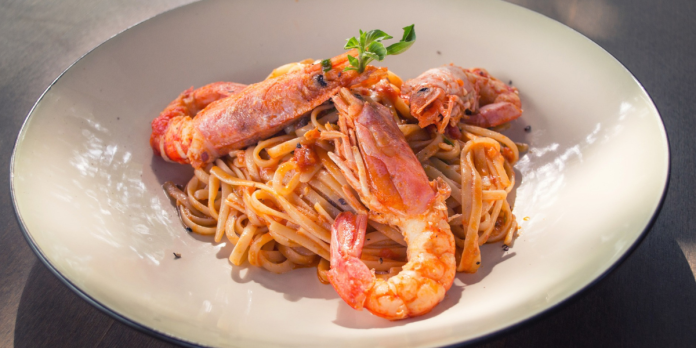Table of Contents
Spaghetti, a staple in many households around the world, is beloved for its versatility, simplicity, and the myriad of flavors it can carry. While it might seem straightforward, cooking spaghetti to perfection can be an art form. Whether you’re a novice in the kitchen or an experienced home chef, mastering the art of cooking spaghetti can elevate your culinary game. In this comprehensive guide, we’ll delve into the best ways to cook spaghetti, explore various techniques, tips, and tricks, and answer some frequently asked questions to ensure your spaghetti dishes are always a hit.
Spaghetti | What is the secret to good spaghetti? In 2024
The Basics of Cooking Spaghetti

Before we dive into the nuances of cooking, let’s cover the basics. Properly cooking involves just a few key steps:
- Boiling Water: Start with a large pot of water. For every pound of spaghetti, use at least 4-6 quarts of water. This ensures the pasta has enough room to cook evenly and prevents it from sticking together.
- Salting the Water: Add a generous amount of salt to the boiling water. The general rule is about 1-2 tablespoons per quart of water. Salting the water seasons the pasta as it cooks and enhances its flavor.
- Adding the Spaghetti: Once the water is at a rolling boil, add the spaghetti. Stir immediately to prevent sticking and ensure even cooking.
- Cooking Time: Follow the package instructions for cooking time, typically around 8-12 minutes for dried spaghetti. For al dente pasta, cook it slightly less than the recommended time, as it will continue to cook when mixed with the sauce.
- Draining and Serving: Once the spaghetti reaches the desired doneness, drain it in a colander. Do not rinse the pasta, as the starch on the surface helps the sauce adhere better.
Advanced Techniques for Perfect Spaghetti
While the basics will get you started, there are advanced techniques that can elevate your spaghetti dishes to the next level. Here are some tips to perfect your spaghetti cooking skills:
- Use High-Quality Pasta: The quality of the pasta can significantly impact the final dish. Opt for high-quality, durum wheat spaghetti for the best texture and flavor.
- Reserve Pasta Water: Before draining the spaghetti, reserve a cup of the starchy pasta water. This can be used to adjust the consistency of your sauce and help it cling to the pasta.
- Finish Cooking in the Sauce: For a truly integrated dish, finish cooking the spaghetti in the sauce for the last 1-2 minutes. This allows the pasta to absorb the flavors of the sauce.
- Use Fresh Ingredients: When making sauces, use fresh, high-quality ingredients. Fresh tomatoes, garlic, basil, and Parmesan can make a world of difference in the final dish.
- Experiment with Sauces: While classic marinara and Alfredo are always delicious, don’t be afraid to experiment with different sauces. Pesto, carbonara, aglio e olio, and seafood sauces can add variety and excitement to your meals.
Spaghetti Recipes to Try
To inspire your spaghetti cooking adventures, here are some delicious recipes that highlight different techniques and flavors:
1. Classic Spaghetti Carbonara
Ingredients:
- 1 pound spaghetti
- 4 large eggs
- 1 cup grated Pecorino Romano cheese
- 1/2 cup grated Parmesan cheese
- 4 ounces pancetta or guanciale, diced
- 4 cloves garlic, minced
- Salt and black pepper to taste
- Fresh parsley, chopped (optional)
How to Make Igbo Black soup | Best Recipe of 2024.
Instructions:
- Boil the spaghetti in salted water until al dente.
- In a bowl, whisk together eggs, Pecorino Romano, and Parmesan.
- Cook the pancetta in a large skillet until crispy. Add garlic and cook until fragrant.
- Drain the spaghetti, reserving some pasta water. Add spaghetti to the skillet with pancetta.
- Remove from heat and quickly mix in the egg and cheese mixture, stirring constantly. Add reserved pasta water if needed to achieve a creamy consistency.
- Season with salt and pepper, garnish with parsley, and serve immediately.
2. Spaghetti Aglio e Olio
Ingredients:
- 1 pound spaghetti
- 6 cloves garlic, thinly sliced
- 1/2 cup extra virgin olive oil
- 1 teaspoon red pepper flakes
- 1/4 cup chopped fresh parsley
- Salt to taste
- Freshly grated Parmesan (optional)
Instructions:
- Boil the spaghetti in salted water until al dente.
- In a large skillet, heat the olive oil over medium heat. Add garlic and red pepper flakes, and cook until garlic is golden and fragrant.
- Drain the spaghetti, reserving some pasta water. Add spaghetti to the skillet and toss to coat in the garlic oil.
- Add parsley and a splash of pasta water if needed. Season with salt.
- Serve with freshly grated Parmesan, if desired.
3. Spaghetti Puttanesca
Ingredients:
- 1 pound spaghetti
- 4 cloves garlic, minced
- 1/4 cup extra virgin olive oil
- 1 can (28 ounces) crushed tomatoes
- 1/2 cup pitted black olives, sliced
- 2 tablespoons capers, drained
- 6 anchovy fillets, chopped
- 1 teaspoon red pepper flakes
- Fresh basil, chopped
- Salt and pepper to taste
Instructions:
- Boil the spaghetti in salted water until al dente.
- In a large skillet, heat olive oil over medium heat. Add garlic, anchovies, and red pepper flakes, and cook until fragrant.
- Add crushed tomatoes, olives, and capers. Simmer for 10-15 minutes.
- Drain the spaghetti and add it to the skillet. Toss to combine and heat through.
- Season with salt and pepper, and garnish with fresh basil. Serve immediately.
How To Make Benin Black soup | Best Guide of 2024
4. Spaghetti Bolognese
Ingredients:
- 1 pound spaghetti
- 2 tablespoons olive oil
- 1 large onion, finely chopped
- 2 carrots, finely chopped
- 2 celery stalks, finely chopped
- 4 cloves garlic, minced
- 1 pound ground beef
- 1 pound ground pork
- 1 cup red wine
- 2 cans (28 ounces each) crushed tomatoes
- 1/4 cup tomato paste
- 1 cup beef broth
- 2 bay leaves
- Salt and pepper to taste
- Fresh basil and Parmesan for garnish
Instructions:
- Boil the spaghetti in salted water until al dente.
- In a large pot, heat olive oil over medium heat. Add onion, carrots, and celery, and cook until softened.
- Add garlic and cook until fragrant. Add ground beef and pork, and cook until browned.
- Pour in red wine and cook until reduced by half. Add crushed tomatoes, tomato paste, beef broth, and bay leaves.
- Simmer for 1-2 hours, stirring occasionally. Season with salt and pepper.
- Remove bay leaves and serve sauce over spaghetti. Garnish with fresh basil and Parmesan.
5. Lemon Garlic Shrimp Spaghetti
Ingredients:
- 1 pound spaghetti
- 1/4 cup extra virgin olive oil
- 6 cloves garlic, minced
- 1 pound large shrimp, peeled and deveined
- 1/2 teaspoon red pepper flakes
- Zest and juice of 2 lemons
- 1/4 cup chopped fresh parsley
- Salt and pepper to taste
- Freshly grated Parmesan (optional)
Instructions:
- Boil the spaghetti in salted water until al dente.
- In a large skillet, heat olive oil over medium heat. Add garlic and red pepper flakes, and cook until fragrant.
- Add shrimp and cook until pink and cooked through.
- Add lemon zest and juice, and stir to combine.
- Drain the spaghetti, reserving some pasta water. Add spaghetti to the skillet and toss to coat. Add pasta water if needed.
- Season with salt and pepper, and garnish with parsley and Parmesan. Serve immediately.
Frequently Asked Questions (FAQ)

Q: How do I know when the spaghetti is done? A: The best way to check if spaghetti is done is to taste it. It should be tender but still have a slight firmness in the center, known as “al dente.” You can also check by cutting a strand in half; it should have a tiny white dot in the center.
Q: Should I rinse spaghetti after cooking? A: No, you should not rinse spaghetti after cooking. The starch on the surface helps the sauce adhere better to the pasta. The only exception is if you’re making a cold pasta salad, in which case rinsing helps cool the pasta and prevents clumping.
Q: How much spaghetti should I cook per person? A: A general rule of thumb is to cook about 2 ounces (56 grams) of dried spaghetti per person. This amount will yield about 1 cup of cooked pasta, which is a standard serving size.
Q: Can I cook spaghetti in the sauce instead of boiling it? A: While you can cook spaghetti in the sauce, it typically requires more liquid and a longer cooking time. This method is often used in one-pot pasta dishes where the pasta absorbs the flavors of the sauce as it cooks.
Q: How do I prevent spaghetti from sticking together? A: To prevent spaghetti from sticking together, make sure to use plenty of water and stir the pasta occasionally during cooking. Adding a bit of olive oil to the boiling water can also help, but it’s not necessary if you use enough water and stir the pasta.
Q: Can I reheat cooked spaghetti? A: Yes, you can reheat cooked spaghetti. The best way to do this is to place the pasta in a skillet with a bit of water or sauce and heat it over medium-low heat, stirring occasionally until warmed through. You can also microwave it, but this method can sometimes result in uneven heating.
Q: What is the best way to store leftover spaghetti? A: Store leftover spaghetti in an airtight container in the refrigerator. It will keep for 3-5 days. If possible, store the pasta and sauce separately to prevent the pasta from becoming too soggy.
Q: Can I freeze cooked spaghetti? A: Yes, you can freeze it. Portion it into airtight containers or freezer bags, and it will keep for up to 3 months. Thaw it in the refrigerator overnight before reheating.
Q: What are some variations of spaghetti dishes? A: There are countless variations of dishes, including spaghetti alla carbonara, spaghetti puttanesca, spaghetti aglio e olio, spaghetti Bolognese, and lemon garlic shrimp spaghetti, to name a few. You can also experiment with different sauces and ingredients to create your own unique dishes.
Q: What are some common mistakes to avoid when cooking A: Common mistakes to avoid include not using enough water, not salting the water, overcooking or undercooking the pasta, not stirring the pasta, and rinsing the pasta after cooking. Following the proper techniques can help you achieve perfectly cooked spaghetti every time.
Conclusion

Cooking to perfection is a skill that can greatly enhance your culinary repertoire. By understanding the basics, mastering advanced techniques, and experimenting with different recipes, you can create delicious and memorable spaghetti dishes. Whether you prefer classic Italian flavors or innovative new combinations, the possibilities with spaghetti are endless. So, grab a pot, boil some water, and start your spaghetti cooking adventure today!
This comprehensive guide should provide everything needed to master the art of cooking spaghetti and ensure your dishes are always delicious and satisfying.





















